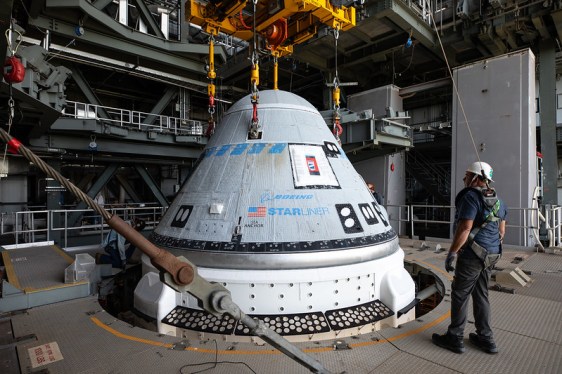A Historic Mission to the International Space Station
Leaders from NASA and Boeing have announced that the first crewed Starliner mission is moving ahead toward its historic May 6 launch date. The capsule will carry two astronauts, Butch Wilmore and Suni Williams, to the International Space Station (ISS). This marks a significant milestone for Boeing’s Starliner program, which has been plagued by delays and technical issues.
A Critical Flight Test Review
NASA and Boeing concluded that the capsule is ready for launch after completing a critical flight test review on Thursday. The review was conducted to ensure that the Starliner spacecraft is safe for crewed missions. Barring any last-minute issues, the astronauts will board Starliner on the evening of May 6 and take their ride on a United Launch Alliance Atlas V rocket to space.
A Safe Arrival at the ISS
Around 24 hours later, the two astronauts will arrive at the ISS, where they’ll stay for about a week. Starliner will remain docked with the station, and the duo will use it to return to Earth. A total of five parachutes will slow Starliner from ultra-fast orbital speeds to enable a soft landing somewhere in the western U.S.
The Significance of the Mission
The significance of this mission cannot be overstated. NASA established the Commercial Crew Program (CCP) in 2011 to purchase astronaut transportation services from private industry. The agency selected SpaceX and Boeing under a multibillion-dollar deal. However, Boeing’s Starliner has been delayed by numerous technical issues, resulting in over $1.5 billion in overrun costs.
A New Spacecraft for NASA
For NASA, a new spacecraft means doubling America’s astronaut transportation resources and introducing a much-needed degree of redundancy to the agency’s human spaceflight program. If Boeing nails this test, Starliner will achieve its final certification and can begin regular missions under the CCP contract.
The Probability of Loss-of-Crew
NASA determined that the probability of loss-of-crew with this Starliner mission is 1-in-295, which is above NASA’s required 1-in-270 odds. A NASA representative did not have equivalent data for SpaceX’s Crew Dragon. ‘The lives of our crew members, Suni Williams and Butch Wilmore, are at stake,’ said NASA’s associate administrator, Jim Free. ‘We don’t take that lightly at all.’
Additional Launch Opportunities
If Boeing and NASA are unable to meet the May 6 date, there are additional launch opportunities on May 7, 10, and 11.
The Impact of Delays
Boeing has been hit by over $1.5 billion in overrun costs due to the delays. The aerospace giant has faced regulatory scrutiny due to screwups in its commercial airplane unit. Earlier this year, it was announced that Boeing CEO Dave Calhoun would step down at the end of 2024.
The Importance of Redundancy
A new spacecraft means doubling America’s astronaut transportation resources and introducing a much-needed degree of redundancy to the agency’s human spaceflight program. If Boeing nails this test, Starliner will achieve its final certification and can begin regular missions under the CCP contract.
Conclusion
Boeing’s Starliner is ready for launch, and the historic mission to the International Space Station is on track. The significance of this mission cannot be overstated, as it marks a significant milestone for Boeing’s Starliner program and introduces a much-needed degree of redundancy to NASA’s human spaceflight program.
Related Articles
- Watch Duty was downloaded 2 million times during this week’s LA fires
- CES 2025: Self-driving cars were everywhere, plus other transportation tech trends
- Researchers open source Sky-T1, a ‘reasoning’ AI model that can be trained for less than $450
- Toyota is ‘exploring rockets’ and has made its first investment into Interstellar Technologies



